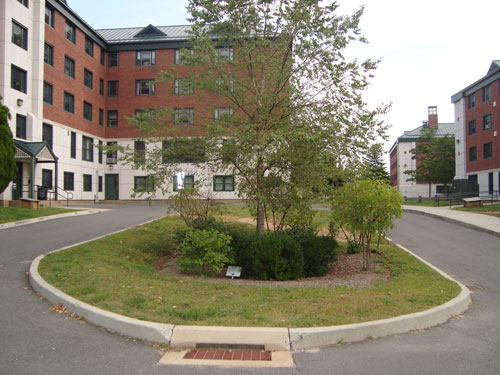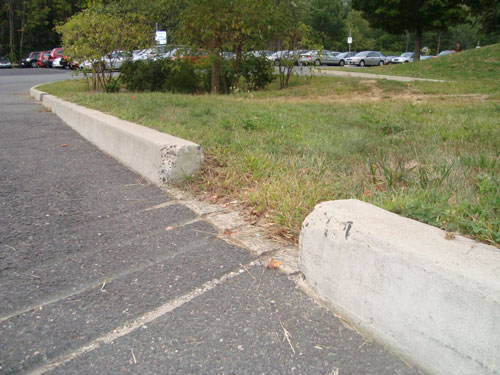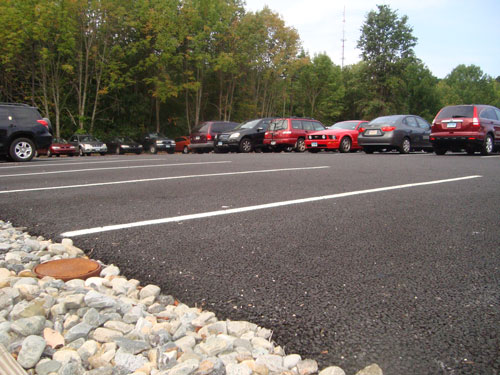Two practices have been installed in this area of campus. First, in 2004, a bioretention area was installed adjacent to one of the dorm buildings. The bioretention is approximately 12 feet by 16 feet in size. Two curb cuts allow stormwater from the paved area to enter the bioretention. Plantings include winterberry, inkberry, and a river birch tree is the central focal point. Plant selection and layout was done by John Alexopoulos and students in the Landscape Architecture program at the UConn. Planting was done by several student groups on campus.



Two maintenance issues have arisen with this site. First, sediment and turf built up at one of the entrance points, which kept water from entering the bioretention. Second, foot traffic through the garden compacted the soil and caused stormwater to actually pass through the bioretention, bypassing the planted area. These issues were corrected in the summer of 2009 during a field inspection. These issues highlight the importance of long-term inspection and maintenance.
Next, in the summer of 2009, pervious paving was installed in the parking lot near the dorms. Approximately 25,000 square feet of pervious asphalt was installed over a crushed stone reservoir base. A crushed stone overflow zone was installed at the low end of the parking lot, and contains a perforated underdrain to remove excess water in case a precipitation event exceeds the infiltration capacity of the paving.
The lot has performed well to date. Some sand has washed onto the lot from an adjacent regular asphalt road that receives winter sanding, which has likely clogged this area slightly.

